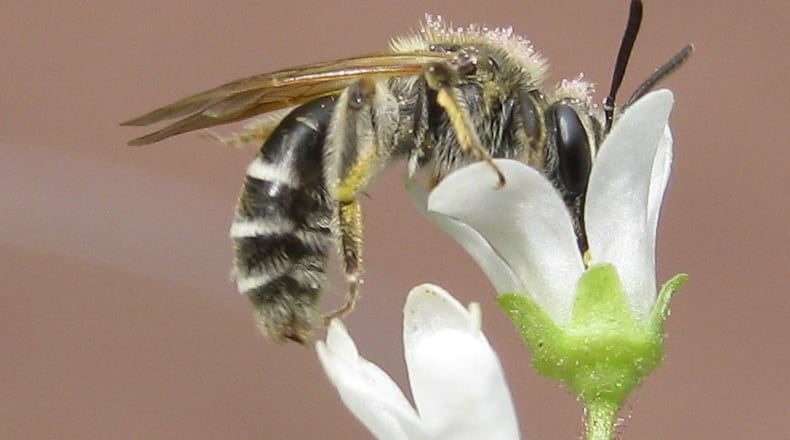My Decatur neighbor, Daniel Ballard, an ecological landscaper, sent a note last week excitedly saying that scores of little dirt mounds had popped up on a grassy expanse on the Decatur High School campus.
The miniature mounds, he noted, mark the underground nests of native mining bees, which live in the ground for most of the year and crawl out in early March to mate and dig new nests. The bees are active only for a few weeks, but their early spring emergence is important because they help pollinate early-blooming garden plants and wildflowers, blueberry bushes and fruit trees.
The Decatur High School campus has a particularly large “aggregate” of the nests, which may be mistaken for small ant hills or earthworm mounds. Seeing the little mounds may not seem exciting, but the sight of so many of them is heartening for those of us who appreciate Georgia’s native bees and all the good they do.
So-named because of their ground digging that creates the little dirt mounds, the half-inch-long mining bees are extremely docile and typically don’t sting.
The group Bee City USA: Decatur has asked the city’s managers and school officials to help protect the bees, said chairperson Peter Helfrich. The response has been “very positive,” he said. His group’s goal is to educate Decatur residents about the importance of bees and other beneficial insects and how to protect them. The group affectionately calls itself “Beecatur.”
More than 85 mining bee species live in Georgia. (The state altogether has more than 500 native bee species.) Like most of the other native bees, mining bees are solitary insects that don’t dwell in hives or colonies as honeybees do.
During March, female mining bees, after mating, build new nests by excavating vertical tunnels several inches deep. Off of the tunnels, they dig out several little chambers. They then fly about to collect pollen and nectar from early spring blooms. The material is rolled into balls and one each is deposited into a chamber.
The females then will lay a fertilized egg on each ball and seal the chamber. The larvae will feed on the pollen balls, transform into adults and emerge a year later in early March.
IN THE SKY: From David Dundee, Tellus Science Museum astronomer: The moon will be last quarter on Tuesday. Venus and Jupiter are low in the west just after sunset. Mars is high in the southwest at dark.
Charles Seabrook can be reached at charles.seabrook@yahoo.com.
About the Author
The Latest
Featured


